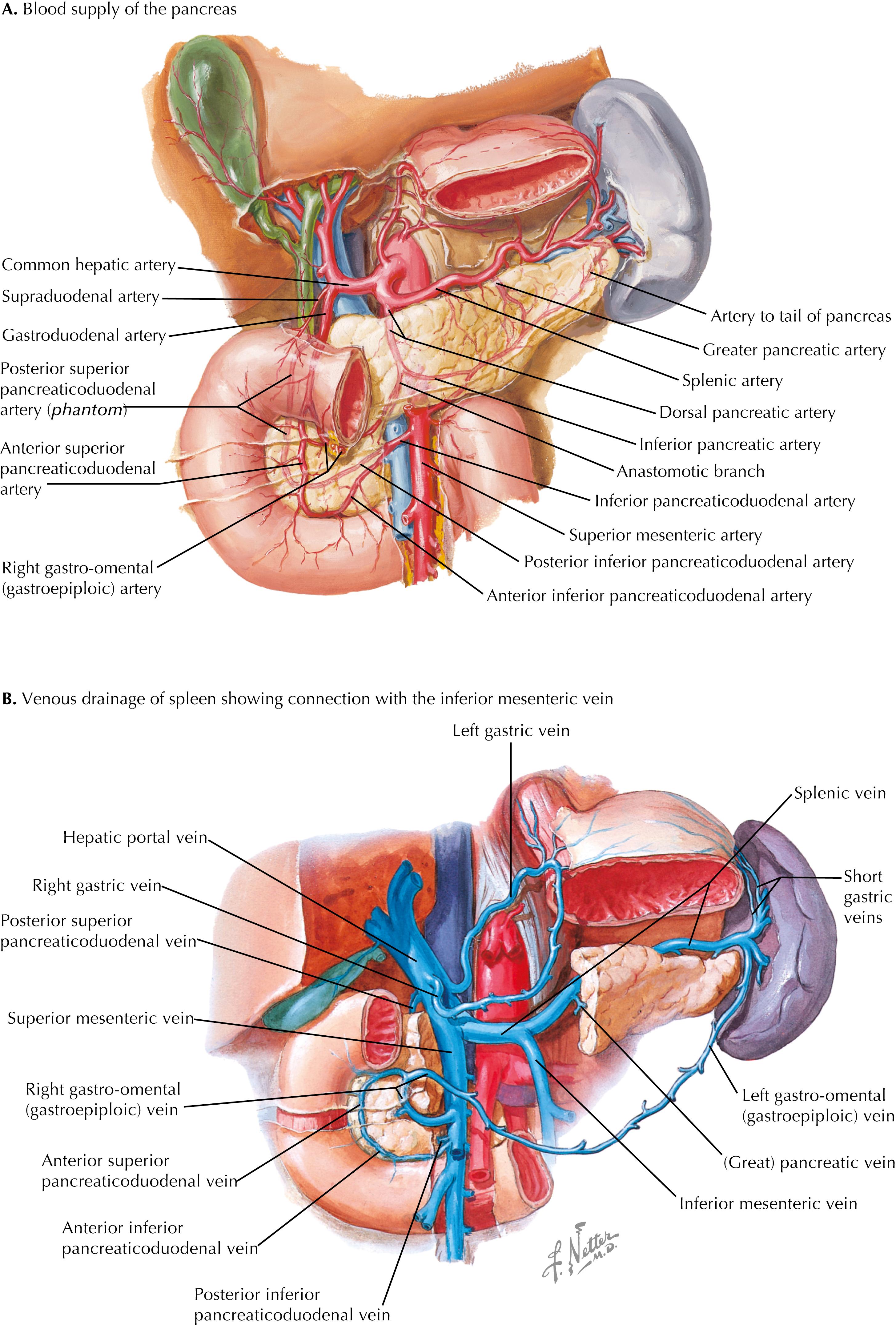Physical Address
304 North Cardinal St.
Dorchester Center, MA 02124
Distal pancreatectomy refers to resection of a portion of the pancreas extending to the left of the superior mesenteric vein-portal vein (SMV-PV) confluence. First described by Billroth in 1884, distal pancreatectomy is performed for various benign and malignant conditions involving the body and tail of the pancreas, the line of transection depending on the location of the pathology, and goals of the resection.
A key to safety of the procedure is a thorough understanding of the vascular anatomy of the pancreas. The blood supply to the tail of the pancreas is provided by the splenic artery and vein ( Fig. 15.1A ). The splenic artery arises from the celiac artery and courses along the superior border of the body and tail of the pancreas.

The splenic vein is located on the posterior surface of the pancreas, and as it runs medially, it joins the SMV to form the PV. There are multiple small tributaries that drain posteriorly into the splenic vein ( Fig. 15.1B ).
The tail of the pancreas terminates in the hilum of the spleen, where a wide array of artery and vein branches exit. Posterior to the spleen is the left kidney and the left adrenal gland.
The Dutch distal pancreatic resection group trial (LEOPARD) supported laparoscopic resection as the preferred approach for left-sided tumors confined to the pancreas for improved clinical and quality of life outcomes.
Relative contraindications for the laparoscopic approach include patients with large tumors, tumors involving celiac artery, superior mesenteric artery (SMA), or other large visceral vessels. Post neo-adjuvant status or patients needing resection of adjacent organs may also benefit from an open approach. The presence of pancreatic cancer is not a contraindication, but the oncologic outcome exceeds the importance of the operative approach.
Become a Clinical Tree membership for Full access and enjoy Unlimited articles
If you are a member. Log in here